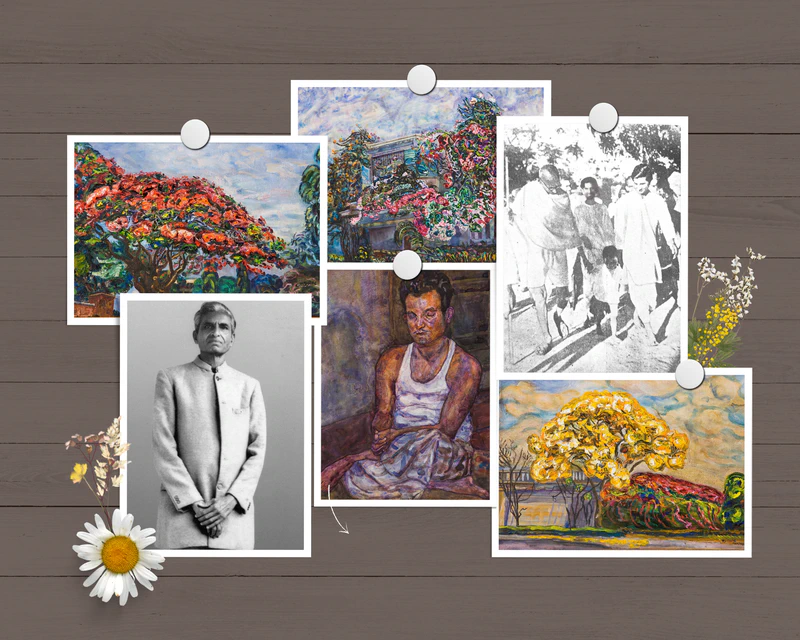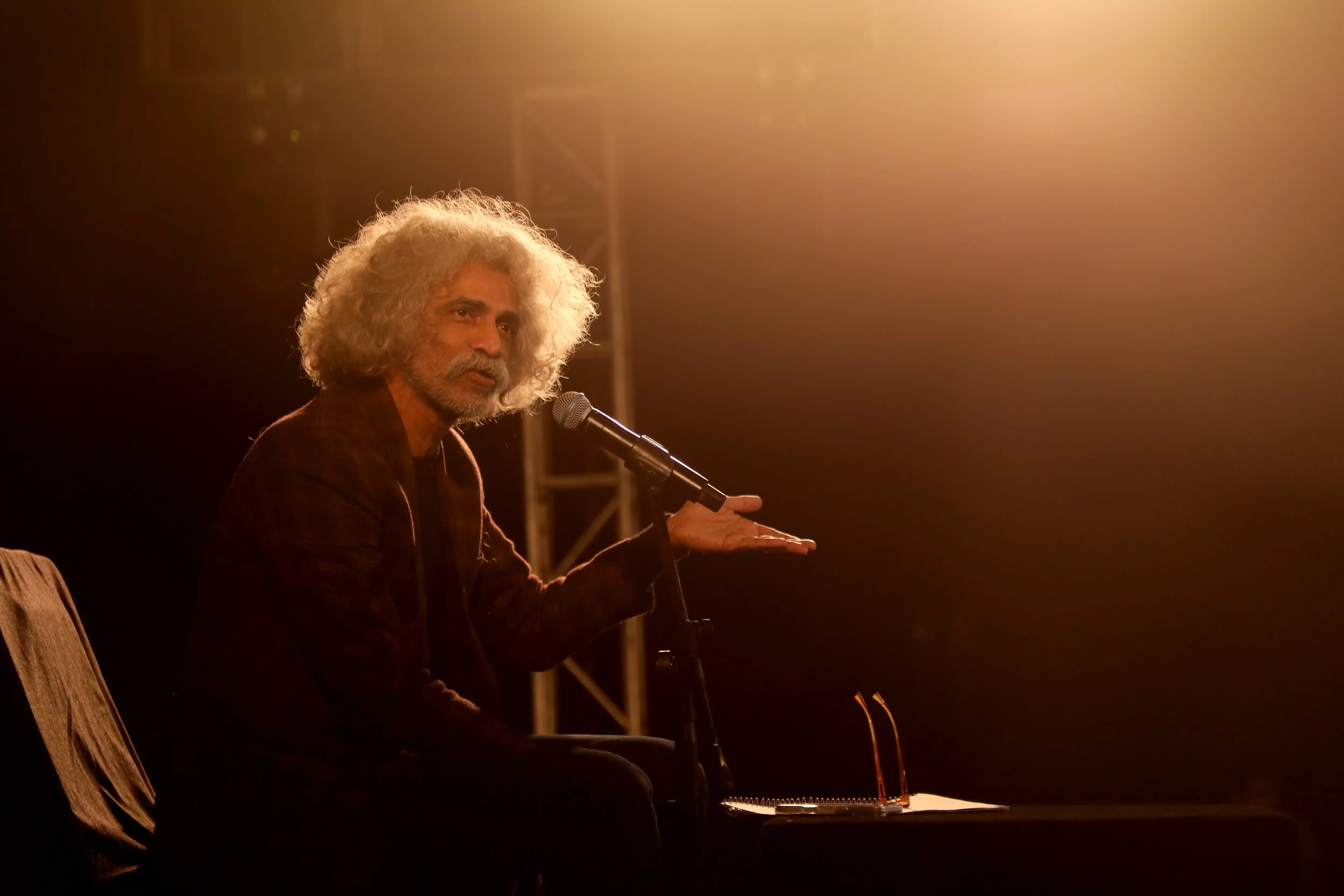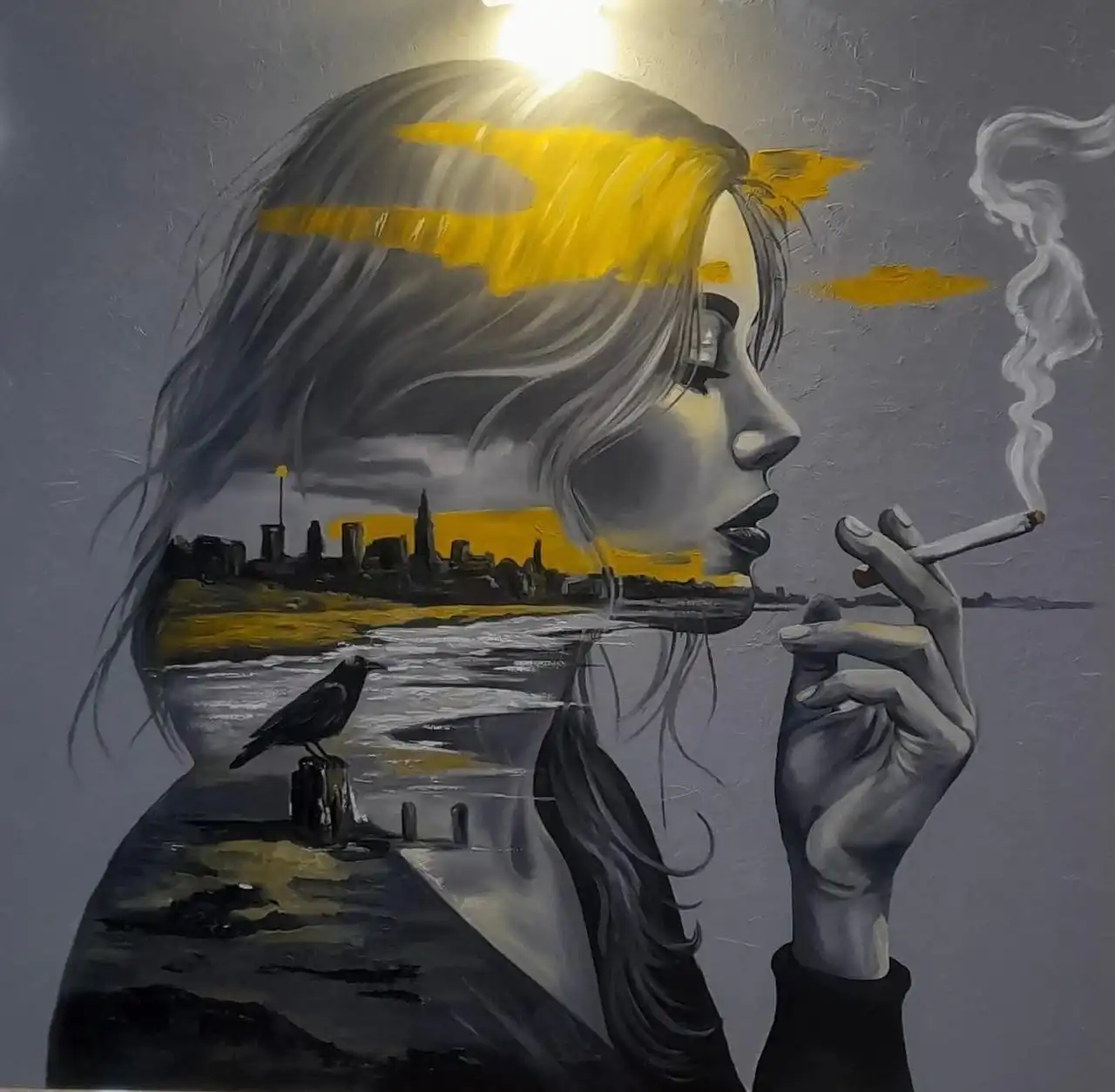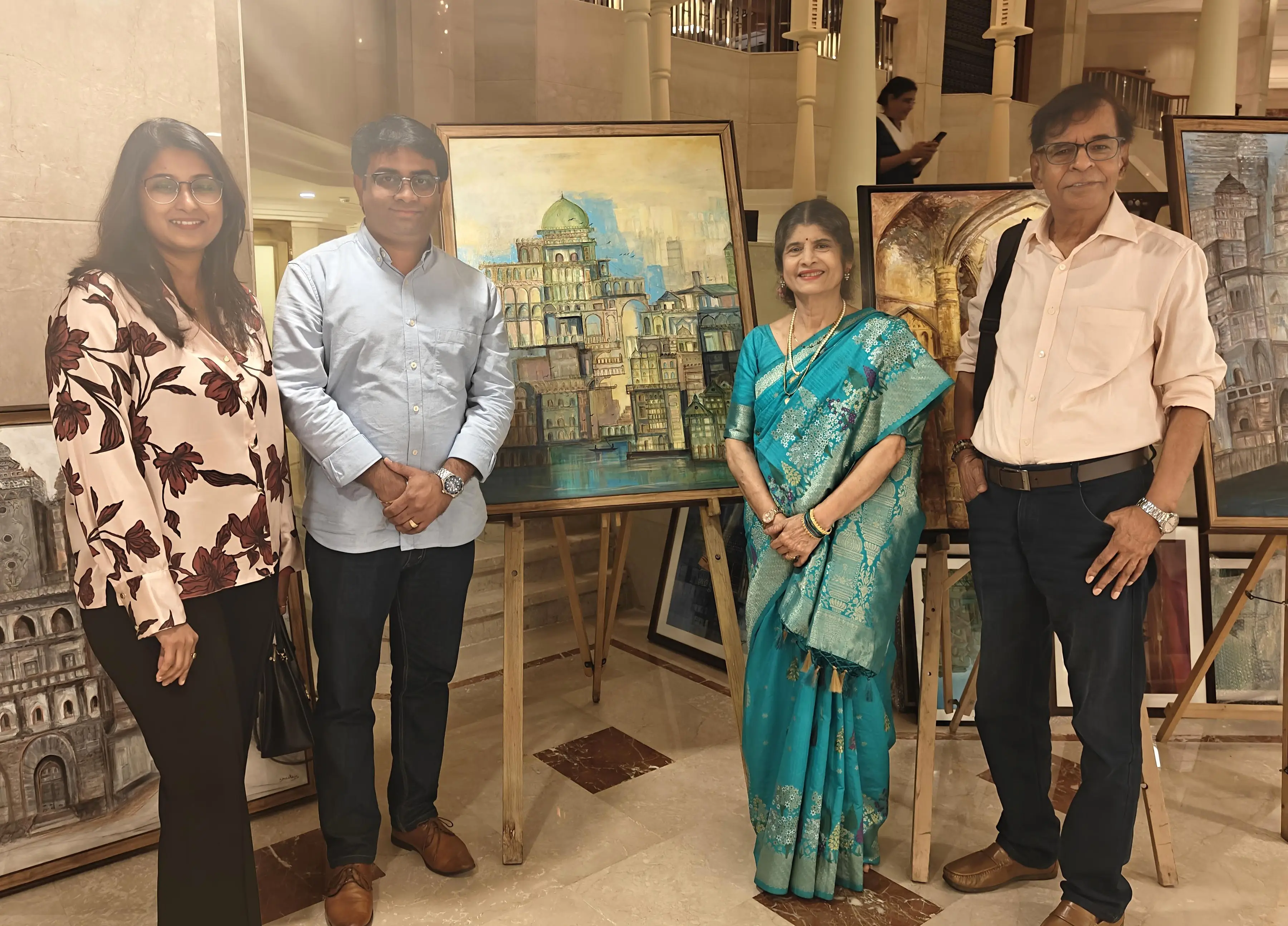The prestigious National Gallery of Modern Art (NGMA) introduces Mumbai to the works of an extraordinary artist, often hailed as the ‘Vincent Van Gogh of India’ but celebrated for his own signature style of painting. His artistic legacy, previously celebrated primarily in Karnataka, is now being introduced to wider audiences in Maharashtra for the very first time. The remarkable retrospective exhibition of Rumale Chennabasaviah titled ‘Varna Mythri’ will be held from March 1 to April 15, 2024. The exhibition, organised with love and reverence by the Madhav Kabe family, who shared a close bond with Rumale Chennabasaviah, is not intended for sale and is solely dedicated to honouring the artist’s legacy and fostering greater awareness. The retrospective will feature 80 works and 3 prints of the artist that span 3 major genres of subjects that the artist painted: cityscapes (special emphasis on the blossoms of Bangalore), landscapes, and spirituality. The exhibition is co-curated by KS Srinivasa Murthy from Rumale Art House, Bengaluru and Shruti Das, Deputy Curator of NGMA Mumbai.
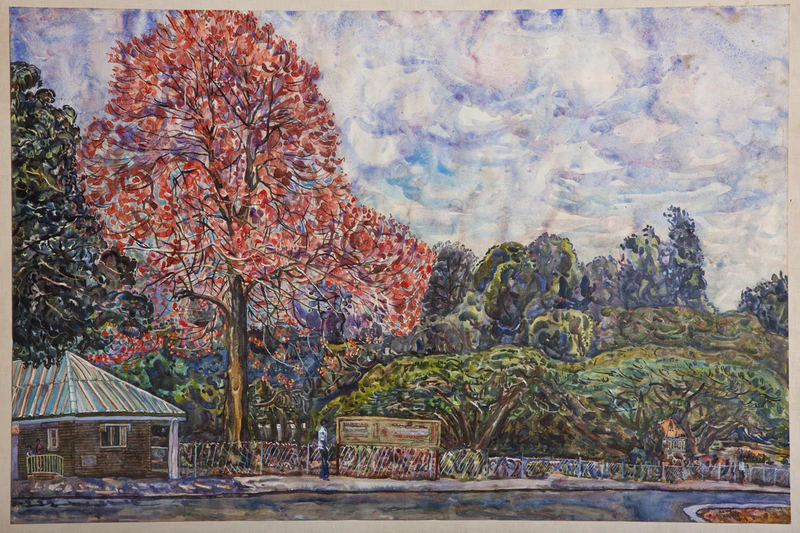
Rumale, as he was fondly called by the art community of Karnataka, was a multi-faceted personality - an artist, a freedom fighter, an MLC, an editor, and a servant of the nation and the public. His passion for nature and spirituality is reflected in his works, which exude the energy he displayed in everything he did. In a lifespan of 78 years (1910 – 1988), he painted approximately 600 works, some of which were commissioned by various government bodies to depict the projects done for the modernisation of Karnataka state. Interestingly, Rumale sacrificed art and plunged into the Indian freedom movement from 1930 - 47 during which he interacted with Mahatma Gandhi, Jawaharlal Nehru and Sardar Vallabhbhai Patel along with other stalwarts.
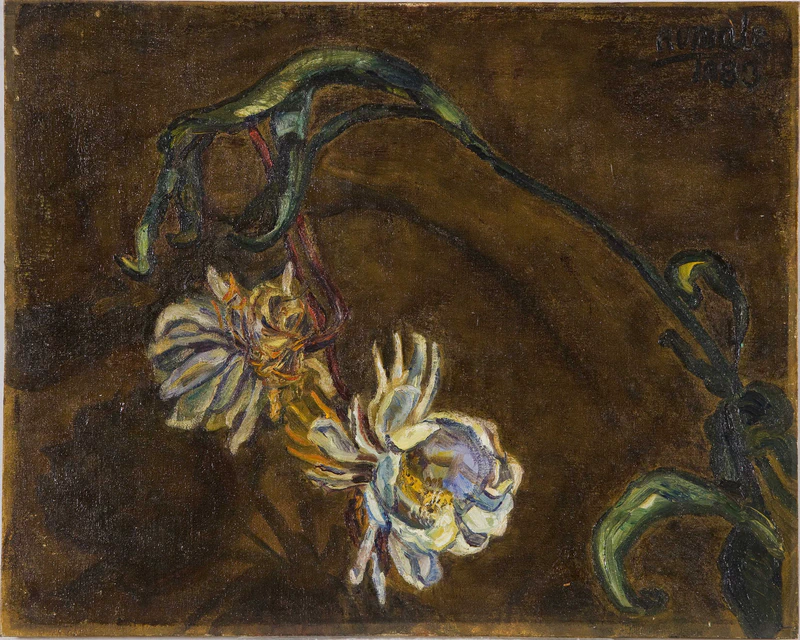
K S Srinivasa Murthy, curator of the show from Rumale Art House, who curated Rumale’s retrospective in Bengaluru in 2011-2012, shares, “In this last decade, my connection to the artist’s works has evolved. Rumale’s visual sense is exceptionally challenging. We need several repeated visits to understand ‘what is going on’ in these deceptively simple easel paintings. As a largely self-taught artist with a personal vision, he had to modify the available visual vocabulary in his own way, unlike the ways of a conventionally trained artist. This he could pull off astonishingly because he arrived at an inclusive way of painting—inclusive of both the representational and non-representational modalities of his contemporaries.” Upon being asked how challenging it was to bring an exhibition of this calibre to a city unaware of the master artist, Murthy offers, “The Mumbai audiences are unaware of Rumale ji and his role in the Karnataka art scene of the 60s, 70s and 80s. With the intention of broadening his audience base, I have crafted a new storyline, which serves to introduce the artist and trace his practice through select works. What is also challenging is to make Rumale ji relevant to present-day audiences, who are varied.”
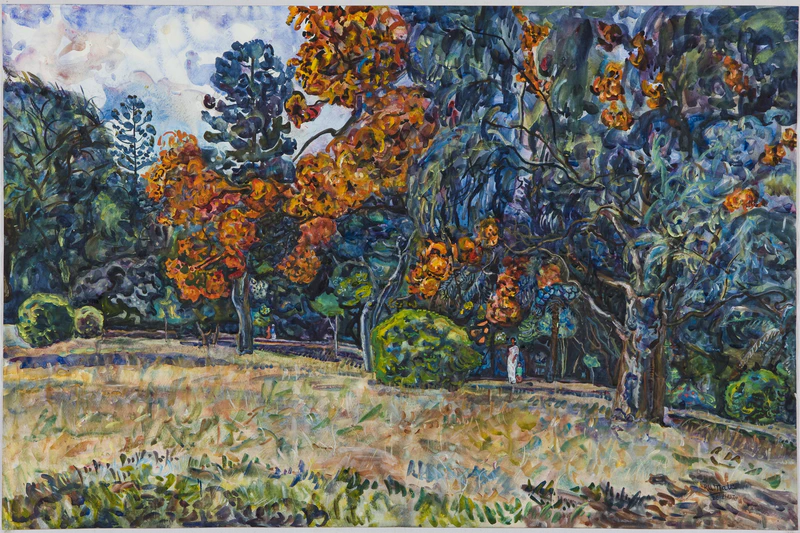
The retrospective, spanning the two sprawling floors of NGMA Mumbai, will feature a captivating collection of 80 artworks and 3 prints, showcasing Rumale’s mastery in watercolour on paper, oil on canvas, and drawings. Two predominant themes revolve around the floral splendour of Bengaluru, with a special focus on rare works dating back to the 1930s, and the landscapes from Karnataka and Sri Lanka. Additionally, the exhibition will showcase larger-than-life watercolour compositions depicting the magnificence of nature, alongside a striking bust of Rumale Chennabasaviah crafted by the renowned sculptor Venkatachelapathi. Rare artifacts, such as a photograph of Rumale with Mahatma Gandhi in the mid-1930s and a Tamra Patra presented to him for his participation in the freedom movement, will offer a glimpse into the artist’s multifaceted life and contributions to the nation.
Visitors will also encounter a spiritual dimension in Rumale’s art, depicted through portraits of his gurus and the sacred sites of India and Sri Lanka. “A biographical section will be recreated to put focus on the artist by explaining his connection with his Guru Sri Sri Sri Shivabalayogi Maharaj, religious sites and temples, his writings, archival photographs, audio-video recordings, and painting tools. The Kaya Kalpa section will highlight the private sadhana that came to influence both his art and life,” informs Shruti Das, Dy Curator, NGMA Mumbai.
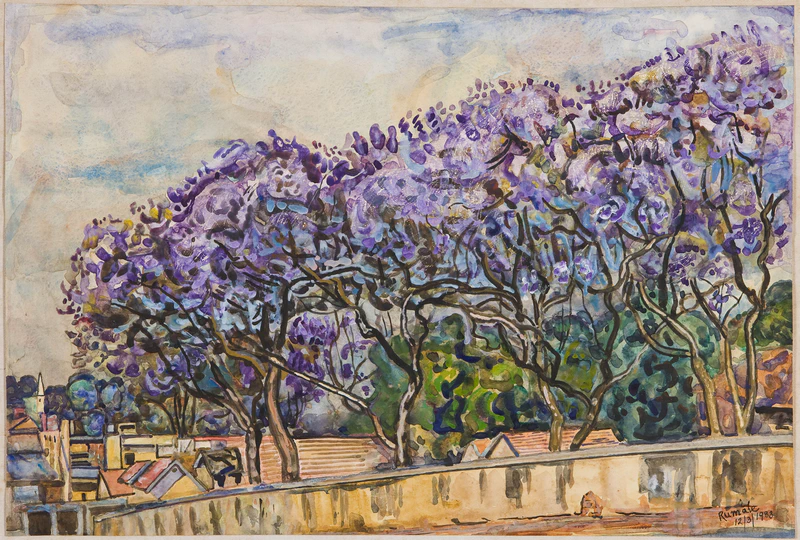
Born in the outskirts of Bengaluru, Rumale’s formative years were steeped in the Indian Freedom Movement, leading to multiple incarcerations. It wasn’t until he reached the age of fifty-two that he could fully dedicate himself to art, painting beautiful flowering trees, parks, ancient edifices, and the rivers and hills of Karnataka. Rumale’s canvases immortalise the vibrant hues of Bengaluru’s Jacarandas, African Tulips, Gulmohars, and Bougainvillea, et al. Rumale was a ‘plein-air’ artist, and Mother Nature was his inspiration, studio and subject. Almost all his landscapes were done on-the-spot, sitting down on the streets. He would go to a particular place at the same time every day to capture his flowers, cityscape, or landscape in consistent lighting conditions. It took him two to three weeks or more to finish one painting.
Rumale preferred to paint for his own satisfaction and fulfilment. In alignment with this philosophy, the Kabe family is taking care of the late legend’s artworks which are housed at the Rumale Art House in Bengaluru for posterity. Nazneen Banu, the former director of NGMA Mumbai, who initiated the retrospective, is delighted that it has finally come to Mumbai. She avers, “Rumaleji’s work, which are quite unique in its style, technique and composition, and thus stand in its own league, needs to be exposed to a much wider audience.”
Umesh Kumar Rustagi, Director, NGMA Mumbai, add, “A multi-faceted artist from Karnataka, Rumaleji’s landscape painting works have archived the erstwhile stunning beauties of Bengaluru. For discerning art lovers of Mumbai, it will be a rare opportunity to witness natural beauty of Bengaluru at NGMA, Mumbai.”

